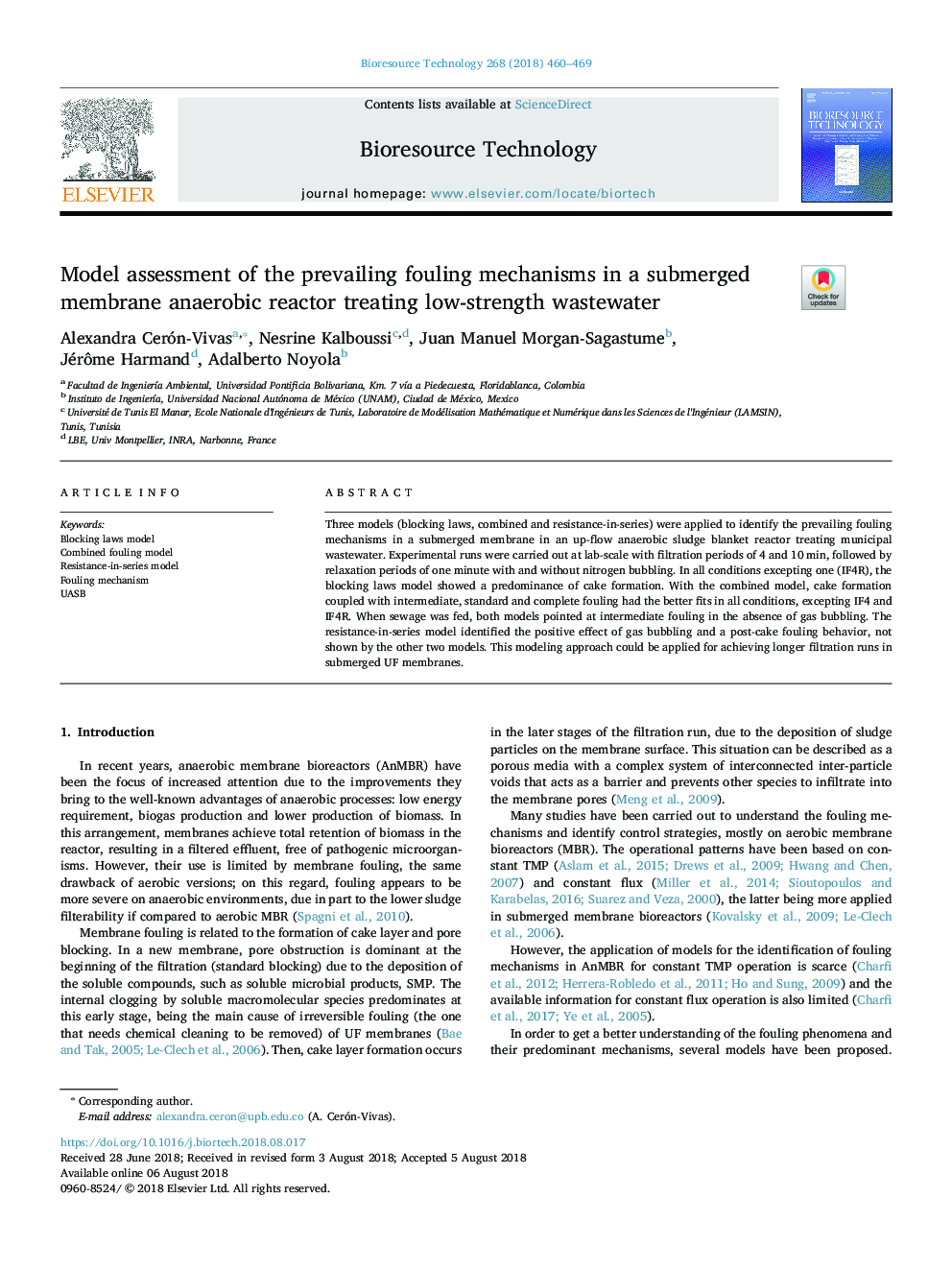| Article ID | Journal | Published Year | Pages | File Type |
|---|---|---|---|---|
| 7065706 | Bioresource Technology | 2018 | 10 Pages |
Abstract
Three models (blocking laws, combined and resistance-in-series) were applied to identify the prevailing fouling mechanisms in a submerged membrane in an up-flow anaerobic sludge blanket reactor treating municipal wastewater. Experimental runs were carried out at lab-scale with filtration periods of 4 and 10â¯min, followed by relaxation periods of one minute with and without nitrogen bubbling. In all conditions excepting one (IF4R), the blocking laws model showed a predominance of cake formation. With the combined model, cake formation coupled with intermediate, standard and complete fouling had the better fits in all conditions, excepting IF4 and IF4R. When sewage was fed, both models pointed at intermediate fouling in the absence of gas bubbling. The resistance-in-series model identified the positive effect of gas bubbling and a post-cake fouling behavior, not shown by the other two models. This modeling approach could be applied for achieving longer filtration runs in submerged UF membranes.
Related Topics
Physical Sciences and Engineering
Chemical Engineering
Process Chemistry and Technology
Authors
Alexandra Cerón-Vivas, Nesrine Kalboussi, Juan Manuel Morgan-Sagastume, Jérôme Harmand, Adalberto Noyola,
